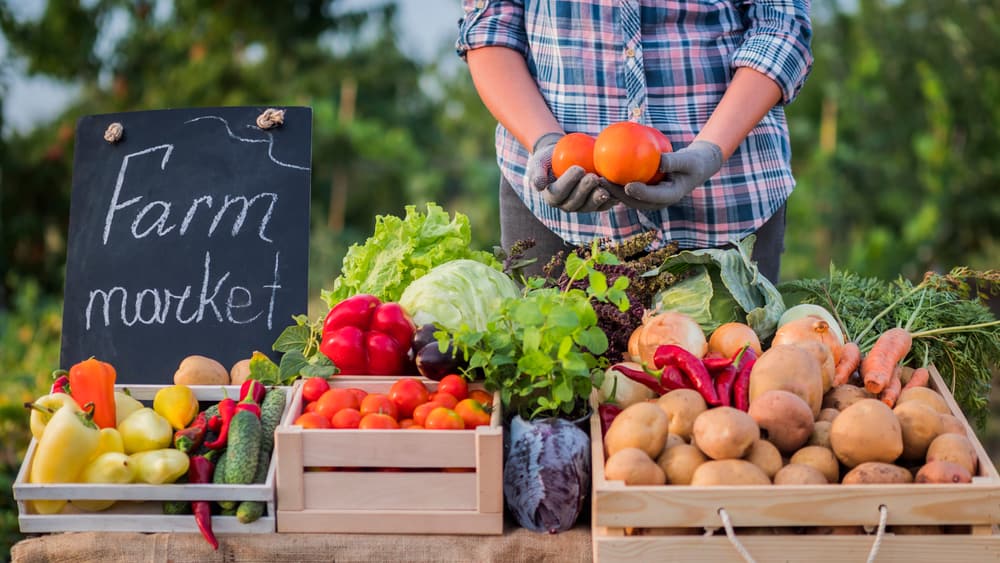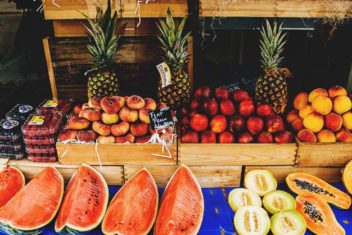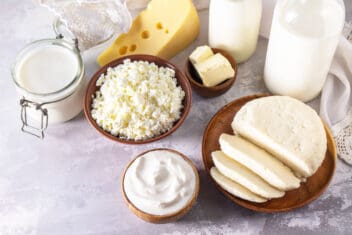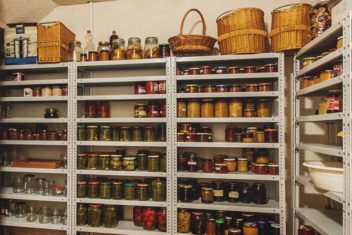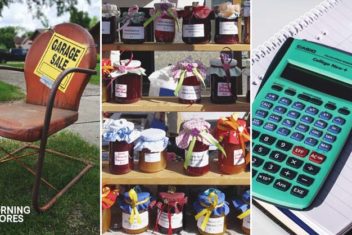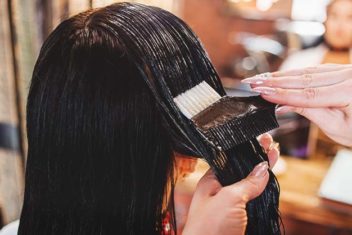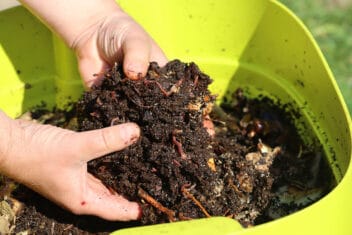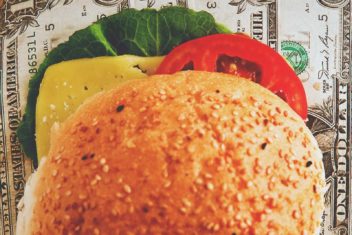Have you created a spectacular product that you’re eager to sell at the local farmer’s market? If so, you may wonder how you can set yourself apart from all the other vendors who are selling similar items.
There are lots of garlic sellers, strawberry vendors, soap makers, and salsa canners. How on earth will you make your garlic, strawberries, soap, or salsa catch the eyes of people walking by?
Below are eight tips to help you—and your products—stand out and grab people’s attention.
Make a Memorable Statement
In my previous life, before I became a writer, homesteader, and herbalist, I was a graphic designer and art director.
My company did a startling amount of branding (and re-branding), and some of our favorite projects involved creating visual identities for different companies. These had to stand out in a sea of competitors and be memorable enough to make an impact so customers would seek them out again.
Understand that the visual aspect of your items is just as important as the products themselves, if not more so. This includes the name, as well as the aesthetics and overall feeling that you’re aiming for.
1. Determine What Feeling you’d Like to Convey
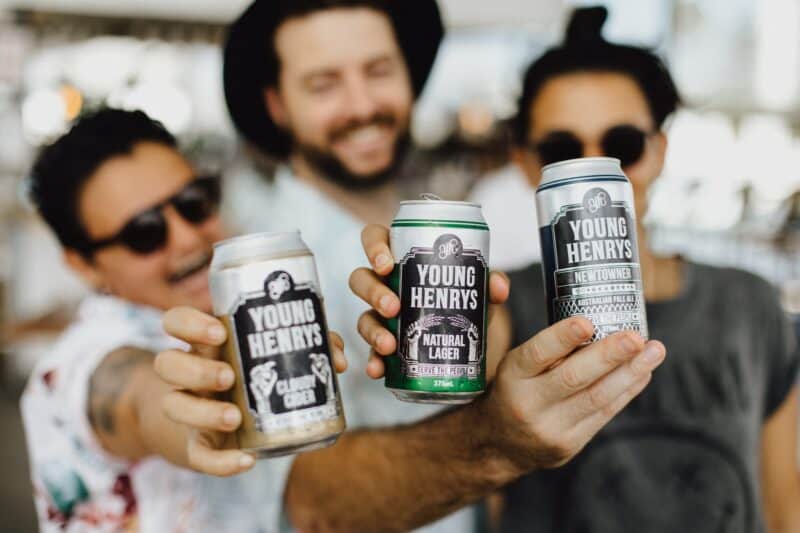
If you want to stand out at the farmer’s market, the most important thing for you to sort out first is your visual identity. We eat (and shop) with our eyes before any other sense, so it’s vital to clothe your products in aesthetics that tell their story and engage all who gaze upon them.
You may not think that your labeling and packaging are important, but they are. Products’ visual identity (aka “branding”) can mean the difference between success and failure.
It doesn’t matter how amazing your soaps smell or how delicious your cheeses are: if your labels look like they were scrawled in the dark by your eight-year-old nephew, your products aren’t going to sell.
The same goes for the name you’re using to sell your products. For example, the organic skincare products labeled “Feather Eagle Sky” (named after the creator’s children) will be far more memorable than “Tasty Jam.”
What’s unique about your company? Do you pride yourselves on being reliable and trustworthy? Or do you place great emphasis on ingredients that are fair-trade and organic?
Determine what are the most important, salient points you want to convey, as this will determine how successful your items will be at the farmer’s market.
2. Let the Packaging Speak for Itself
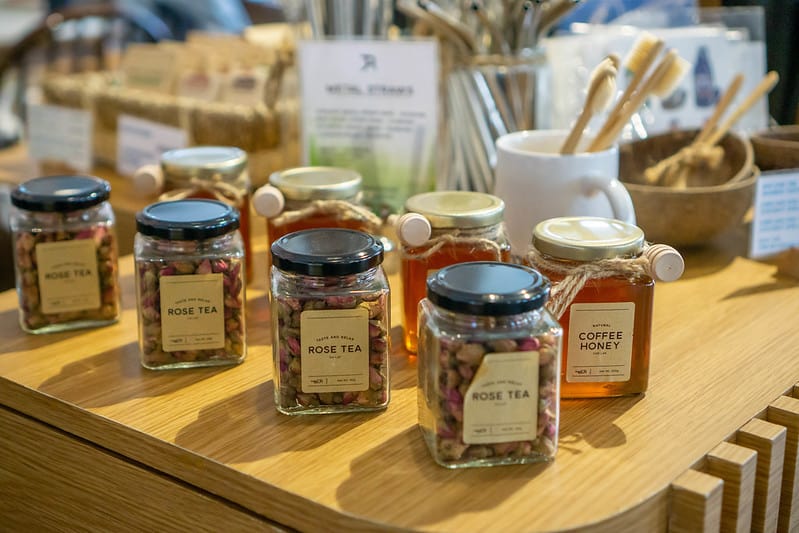
Remember that the branding and packaging you create will give potential buyers an idea as to the quality of your items. It’ll also tell a story about how they were created. This is why it’s so essential to maintain consistency across everything you offer.
If someone places great emphasis on the fact that the products they make are organic and non-toxic, they’ll shoot themselves in the foot if these products are sold in non-recyclable plastic containers.
In contrast, packaging them in custom-made ceramic pots or bamboo jars with renewable cork lids will reinforce the creator’s dedication to organic, eco-friendly items.
Additionally, consider unique or alternative packaging to differentiate you from other vendors. For example, use burlap, printed cotton bags, and raffia twine instead of paper or plastic.
3. Tell an Interesting Story
There are authentic stories behind every product sold at a farmer’s market, and people want to know about them. We want to know about the people and processes behind what we buy so we can make informed, ethical choices. As a result, it’s important to work some of your personal information into your market offerings.
For example, are your soaps crafted by hand? Is your kombucha brewed with the help of your special-needs kids? Do you use goat-powered energy to process your organic tomatoes into salsa?
Are your items USDA-approved, or do they have another official certification? Work these details into your branding. Then, once you’ve sorted out exactly what you want to say about your products, announce that.
- What do you love best about the items you sell?
- In your mind, what’s the most appealing way to show how extraordinary your stuff is?
- What do you want your branding to say about you?
On your banner and/or signage, have the name of your company in large text, with a catchphrase or information below it. For example, the now-defunct San Francisco company Boccalone ensured that there was absolutely no guesswork needed with regard to what they were offering:

A banner like this is clean, simple, considered minimalist, and masculine with its sans-serif typefaces and bold hues. Furthermore, it tells people exactly what’s being sold there in a no-nonsense, assertive statement. Nothing is nebulous about what’s on offer, but rather states who they are, what they sell, and that their products are delicious. End of.
In contrast, if you’re a more whimsical sort and you’d like to tell a fun story through your packaging and signage (as mentioned earlier), feel free to go that route. For example, the “Nosey Goat” cheese put out by the Upper Canada Cheese Company:

Everything about this visual identity is soft, friendly, and feminine. Although they also use sans-serif typefaces, the lowercase title implies non-aggressive playfulness. The hues are gentle and inviting, and the adorable cartoon goat (with a daisy necklace!) encourages the buyer to try it because it’s tame and fun.
If you were setting up a farmer’s market stall with the Boccalone products, you would do best to keep things minimalist and masculine. The surroundings would be butcher block, stainless steel, butcher’s paper, and white smocks.
In contrast, the Nosey Goat stall could have daisy lights strung around to tie into the packaging, with that same purple used in drop cloths as well as the vendors’ clothes.
4. Create Engagement Through Play
Consider rigging up something free raffle tickets with every purchase or a cutout (or mascot) to pose with and post on social media for a potential giveaway. This encourages people to take part in something silly or fun that gives them a chance to win something awesome.
Create a gift basket with some of your best products for them to win if they have the winning raffle ticket or if they’re the chosen social media poster.
Just about everyone enjoys the thrill of potentially winning something amazing, and if it turns out that they enjoy the items they won, you’ll have a customer for life. Better still, they’ll probably share those items with friends and family, thus increasing your following and client base.
5. Dress the Part
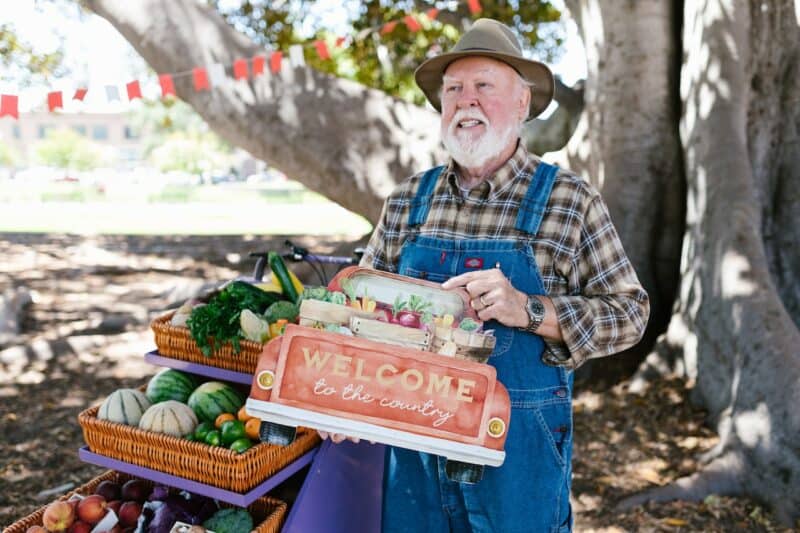
This may go without saying, but consider your personal aesthetics an extension of your farmer’s market stall. Embody the spirit of the products you’re creating so people learn to associate you with these amazing items.
If you’re selling flowers or herbs, wear them. Weave them into crowns, make them into brooches or boutonnieres, wear clothes with floral prints, and so on. Do you grow and sell organic vegetables? Consider wearing an old-timey greengrocer’s apron, or overalls and farm plaid with a sunhat.
Step into the role of the friendly, trustworthy farmer that someone’s great-grandparents would have purchased food from with full confidence.
Become the embodiment of whatever it is you’re selling at this farmer’s market, and you’ll undoubtedly garner more positive attention.
6. Set a Great Stage
When it comes to luring potential buyers with visual appeal, aim to go above and beyond labels and banners.
Choose two colors from your visual identity (such as the primary hue and a complimentary one), and use those to decorate your booth. Find a gorgeous tablecloth in the main hue, or go to a fabric store and find a stunning length of cloth that you can use.
Add interesting notes that help to tell the story of the products you’re selling. For example, if your items are cute and whimsical, consider strings of decorative lights, stuffed animals, adorable cutouts, etc.
In contrast, if you’re aiming for seriousness and reliability, use aesthetics that are clean and crisp, such as butcher board, copper or iron, immaculate white cloth, and so on.
7. Create Enticing Displays
Make your displays a feast for the senses, and people will flock to you. The old adage of not judging a book by its cover was likely coined by those who create crappy covers and even worse books.
Use props that don’t just compliment the items you sell, but also help to tell their story. To stick with the examples we’ve been using, let’s say you sell soaps you make with home-grown herbs. See if you can find some beautiful old apothecary jars and display the herbs you use for each soap type.
For example, have a jar of dried lavender next to your lavender soaps (and make sure to put at least a swirl of purple into the soaps to give a hint as to what they contain). The same goes for ingredients like roses, cedar, lemon balm, etc.
Do you make jams? Expand upon the visual identity you created and base your entire display around it. For instance, if you’ve gone with a retro/vintage aesthetic like Cath Kidston, look for 1950s multi-tiered cake stands to display them, maybe a strawberry mug with popsicle sticks for taste testing.
8. Offer Samples and/or Other Freebies

One of the best ways to pique people’s interest—and create return customers—at the farmer’s market is to give them the opportunity to try your products for free. If folks are hesitant about shelling out cash on an item they’ve never tried before, they’ll be more likely to give your amazing items a try if they can test them without having to invest any money first.
When you think about the samples to offer, ensure that you make things as hygienic and inclusive as possible. For example, use popsicle or other wooden sticks as recyclable utensils to spread jam or honey on crackers.
While you’re at it, consider having different cracker options available, such as gluten-free rice crackers as well as wheat so those with Celiac disease or gluten allergies can taste things too.
If you’re selling soaps or other skincare products at your farmer’s market, offer tiny samples in cute packaging and printed handouts with helpful info.
For example, in the printout that has information about your soap, suggest that it can also be grated and added to a bath for bubbles and extra moisture.
As an added idea, if some of your products are herbal in nature, considering printing on paper that has herb or indigenous wildflower seeds embedded in it. That way, they can plant the paper and grow something beautiful once they’ve finished reading it.
Alternatively, if your items are edible, offer free recipe cards with innovative ideas on how to use these ingredients. You can even team up with some of the other vendors to promote each other’s products by including their ingredients in your recipes.
What NOT to Do at your Farmer’s Market:
If you’re really trying to stand out at the farmer’s market, there are a number of things to avoid. You don’t want to end up shooting yourself in the foot with bad decisions or behaviors.
Be Lax About Hygiene
If you’re selling products at a farmer’s market, there’s a high chance that what you’re selling is meant to go into or onto people’s bodies. As such, you need to be absolutely immaculate when it comes to everything you sell and your own appearance.
This is especially important if there are other vendors at the market who are selling similar products to your own. If a person has to choose between buying items from someone who has dirty hands and leaking containers, and someone who doesn’t, guess who will get more business?
Copy Other People’s Branding or Approaches
Taking cues from other people’s approaches can be a great idea, but imitating them to the letter is seriously frowned upon. This is especially important in the farmer’s market circuit, where every vendor tries to establish themselves with unique offerings.
You want to stand out as an individual and have people remember you and your products, not get you confused with that other vendor at that other market.
Furthermore, it’s bad form to try to undercut another vendor by trying to take sales away from them. We try to create community at these markets and create a network of like-minded friends, not sabotage each other’s income.
Selling products at a farmer’s market is an excellent way to earn money and cultivate a devoted following. By following the suggestions mentioned here, you’ll be positioned ahead of the curve to get noticed, and be well remembered. Best of luck!
